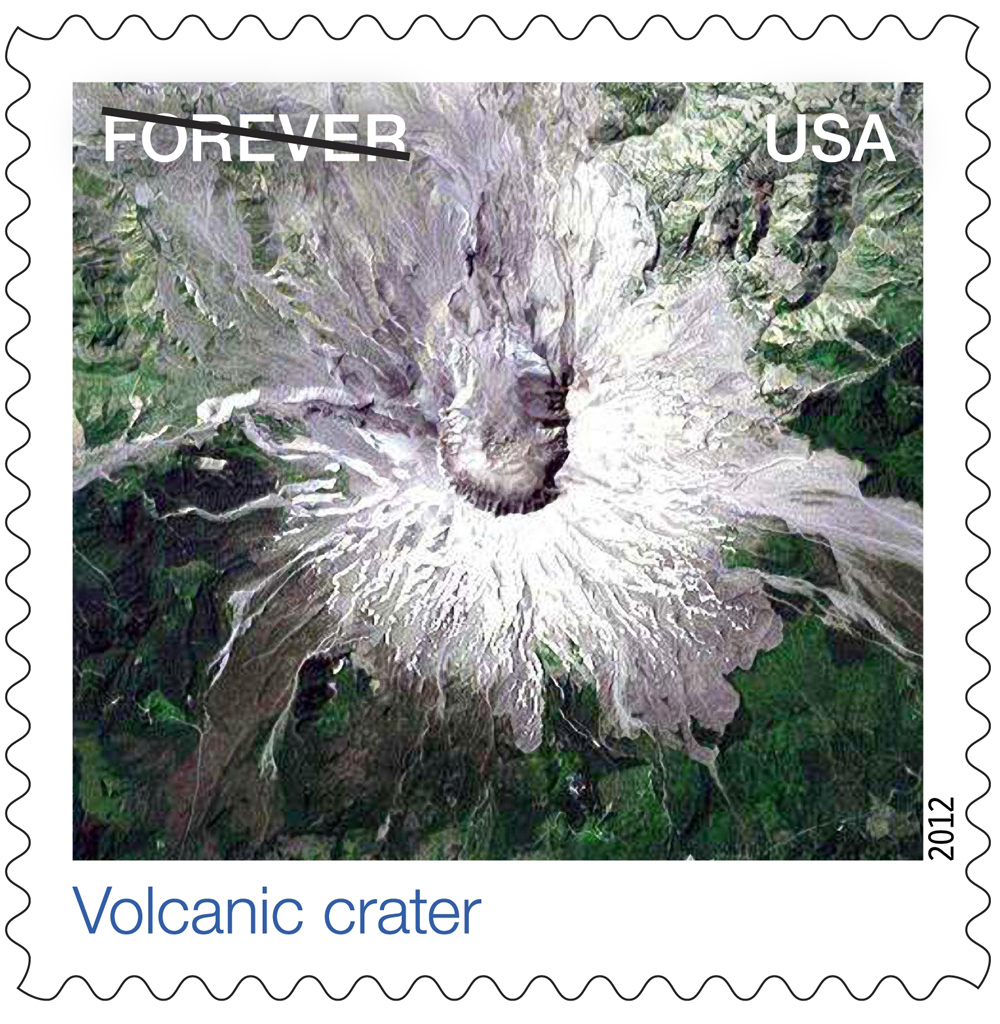'Earthscapes' Forever Stamps Feature Incredible Views

If you head out to buy some stamps next week, you're in for some spectacular views.
The latest set of "Forever" stamps from the U.S. Postal Service will feature a range of bird's-eye views of Earth — from natural to agricultural to urban — from satellites and photographers in airplanes. The stamps will be released on Monday (Oct. 1).
The series, called "Earthscapes," features 15 different views, including a volcanic crater and a type of irrigation called center-pivot. The first give stamps are natural landscapes, including the volcanic crater and the scars it has left on Washington State, fog drifting over Utah's Monument Valley, a geothermal spring and an Alaskan glacier with icebergs that have broken up from it bobbing in a lake. [See the Earthscapes stamps.]
The next five stamps show five products being gathered, grown or harvested: salt, timber, grain, cherries and cranberries, according to a statement from USA Philatelic, a magazine that covers U.S. stamps. Urban scenes finish out the set with images of winding highways and tidy subdivisions seen from overhead.
The images of the volcano crater and the center-pivot irrigation were taken by the NASA/U.S. Geological Survey Landsat 7 satellite. Such satellites are used to understand Earth's changing climate, monitor changing landscapes and see how humans are altering the planet's surface.
Get the Space.com Newsletter
Breaking space news, the latest updates on rocket launches, skywatching events and more!
Join our Space Forums to keep talking space on the latest missions, night sky and more! And if you have a news tip, correction or comment, let us know at: community@space.com.
OurAmazingPlanet was founded in 2010 by TechMediaNetwork, which owned Space.com at the time. OurAmazingPlanet was dedicated to celebrating Earth and the mysteries still to be answered in its ecosystems, from the top of the world to the bottom of the sea. The website published stories until 2017, and was incorporated into LiveScience's Earth section.









